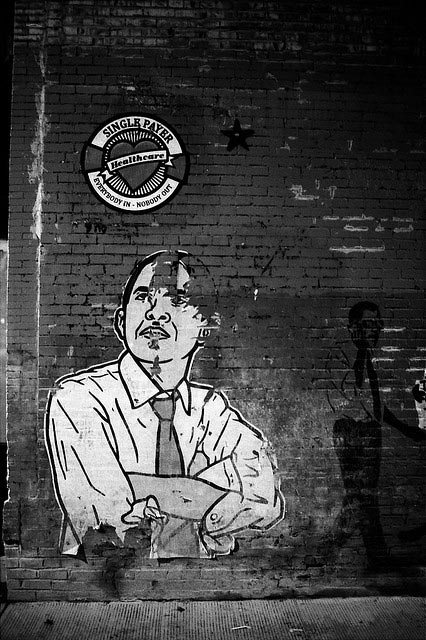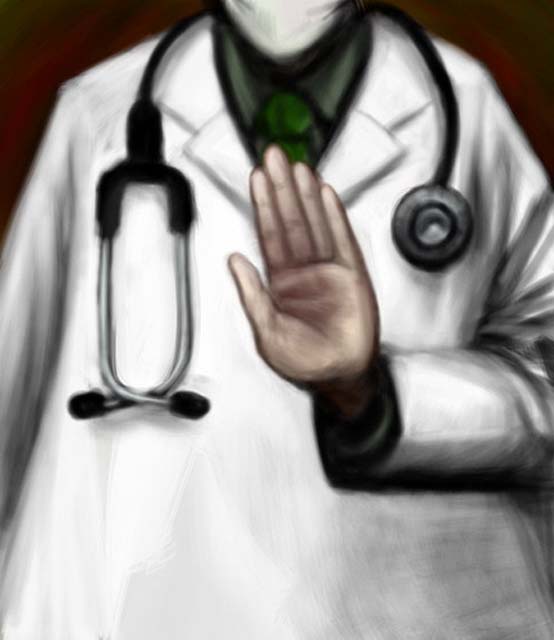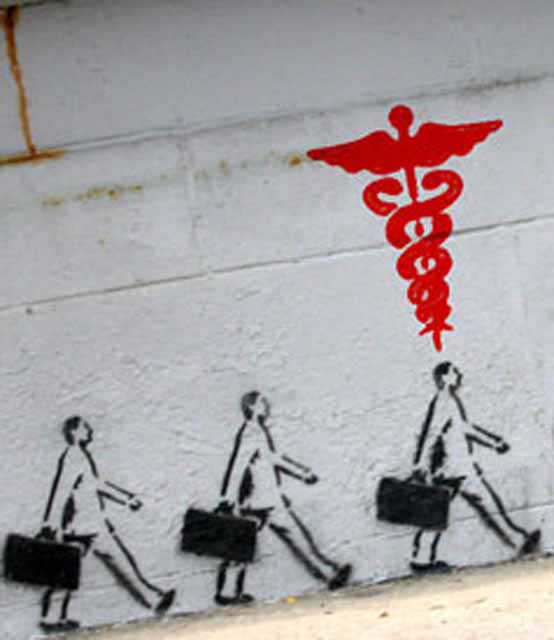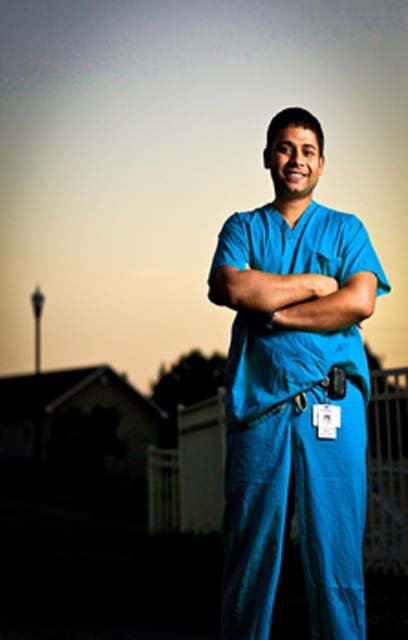
Tales of a Primary Care Physician
After working in a specialized field, not too many doctors enter the unsung area of primary care, which is struggling to attract and keep physicians who will earn less and work more. Dr. Trishul Reddy has had that experience. After pre-residency fellowships in transplant surgery and neurosurgery, the East Tennessee State resident physician entered the area of family medicine. Here in his own words is the story of the road less traveled…
Primary Care Breakdown
Exactly one year since the H.R. 3590 (Patient Protection and Affordability Care Act) was enacted by President Obama in January 2010, the house congress voted, 245-189, to repeal the Affordable Care Act by passing H.R.2. As a family medicine resident, I have seen far too many families suffer because of the politics of health care. A better approach to primary care is imperative for improving the delivery of health services to our nation’s population.
I see this first hand in my residency training in the mountains of East Tennessee.
It’s 11:30 PM on a Sunday night when the medical student and I receive the ER call.
“A thirty-two-year-old diabetic male with uncontrolled sugars and right arm cellulites, I think he needs admission.”
When I reach the Emergency Room, Mike is waiting for me. He is a mildly obese man with an unnaturally swollen, red arm. It hurts to the touch and I can guess that it is infected. As I begin the exam, I ask why he hasn’t visited a primary care physician already. His simple answer is disturbing: “I don’t have the money and I don’t have insurance.”
Mike’s labs return revealing his blood sugars to be in the 200 range with an elevated white blood count confirming an infection. He says his blood sugar is usually in the 200 range because he can’t afford to take the necessary medications to manage his diabetic condition.
My attending staff arrives to continue the patient’s evaluation, but the simple emergency room visit is complicated. My supervising attending intervenes. “Dr. Reddy, this is more serious than it looks. Let’s get a Surgical Consult, MRI of his arm and start him on empirical antibiotics—STAT.”
This is not an unfamiliar scenario. Mike is one of many individuals unable to purchase the necessary medications to manage their medical conditions. Unfortunately, he is neither the first nor the last in this regard.
The High Cost of Living
Sheila is a 55-year-old retired nurse with a history of Type 1 diabetes when she visits the health clinic in Sevierville, Tennessee. She’s stopped in for a routine check-up and mentions troubling pains in her forearms after repetitive movements and occasional numbness in her fingers.
“How long?” I ask.
“Six months,” she answers.
I test her to evaluate her current condition to check for carpel-tunnel-syndrome. The result is positive. This is not encouraging news. Sheila is a patient who visits the health clinic because no insurance company will provide coverage on account of a “pre-existing illness.” In addition to Type 1 diabetes, Sheila now adds carpel-tunnel-syndrome to her list of current medical conditions.
At this point, a patient would need surgical consult or at the bare minimum, a local steroid injection. For Sheila, both options are solutions that she cannot afford. For an alternative substitute; we search the supply room to find a splint to help relieve some of the pain. We finally find two splints — a small and large one— which we improvise by altering them to produce the desired result.
“If the pain worsens, go to the Emergency Room straightaway,” I tell her.
Sheila smiles weakly, “Thank you.” She is not the only troubled patient I encounter at the clinic at the Sevierville Health Clinic.

No Money – No Medications
Sophie and her husband, Jay, are next, walk-ins with complaints of upper-abdominal pain becoming exaggerated with food intake. They share that they both have jobs, but no health insurance, an explanation often classified as the “working poor.”
“My belly burns after I have food, Doc,” Jay says. “I’ve tried everything.”
“We’ve both stopped eating spicy food,” Sophie explains. “We even sleep with two pillows under our heads. We’re trying to lose weight, but-”
“We don’t know what to do, Doc.” Jay says. “The acidity is killing us!”
“Have you tried any medication?” I ask. The first lines of available heartburn medications are cheap and available at our clinic. The second line is comparatively expensive and we have no samples.
“Yes, we’ve tried those.” Sophie refers to the first line medications. “But they don’t work. We’ve tried antibiotics, too, but those don’t seem to work either.”
As a long-term sufferer of heartburn myself, I can relate to the unnecessary distress they are suffering through. That very same night, my wife and I stop for a meal at a local restaurant. As we walk to the car, my heartburn flares up. I stop at a nearby pharmacy and make a purchase to quell the symptoms. It is almost a reflex to take what I need to for my health’s sake, expecting it to work as always—without a second thought.
But I feel guilty remembering the morning conversation with Sophie and Jay. The memory is vivid in my mind as I recall asking them about possible medications before they left the clinic disappointed and empty-handed. There was nothing else I could do for them then. As my own heartburn faded, I wondered if one of them might have had a stomach ulcer or worse—if they were bleeding from a possible ulcer.
Primary Health Care – Haves and Have Nots
As a doctor, I am disappointed to realize the failure to relieve human suffering, especially when the treatment was simple and available. In one of the most advanced nations on earth, I refuse to believe that there are individuals and families who cannot afford basic primary health care.
It troubles me to witness similar encounters over and over again. In most other countries citizens can live pain-free and disease-free from such conditions. Why must these patients suffer? Why are some families forsaken? Why do I have the privilege of affording simple medications while my patients cannot? Is it because I have worked hard all of my life moving up in society to a point where I can afford insurance and thus, be entitled to good health care? Why are my patients struggling through their lives as if they do not have the same rights and entitlements to good health and happiness?
It is not the individual’s fault. Our displeasure should be directed towards the faults of a structure that remains unsuccessful in properly sharing the benefits of medical discoveries and technological advances. In the name of individual responsibility, low and middle-income families have been overlooked, neglected and/or exploited by powerful for-profit companies. Such companies use the media to spin anything or anyone supporting basic health access for all citizens. Supporters of basic health access are labeled “socialist” or “European” thereby muddling the public’s understanding of the true matter at hand.
The patients I talked about earlier and whose names have been changed to protect their identity, originally had minute health issues which could be easily treated with affordable solutions under a hundred dollars. Because they had no access to a primary care physician, these patients landed in the ER while in the last stages of the disease process. Medical expenses of more than $10,000 were the result, a price eventually paid by hardworking taxpayers. This is hardly their fault.
The importance of a structure protecting every citizen’s right to primary care access is necessary. While I appreciate small government, our current private sector approach to healthcare has been grossly unsuccessful in providing ways to share the advantages of medical innovations and advances for today’s society.
Is there a solution?
Yes. It is a two-step procedure. The first step is providing basic universal health coverage and the second is to meet the demand of the first. To do so, there should be broad access to primary care physicians. The importance of primary care must not be underestimated.


Primary Care – Where Have All the Doctors Gone?
When it comes to health care, more money is spent per person in the United States than in any other nation. However, the United States continues to produce poor health outcomes by comparison. For instance, the United States spent 16 % of its GDP on health care in 2007, yet still ranked 28th in Infant Mortality rates. In various studies, particularly the research of Dr. Barbara Starfield, it has been shown that lower cost Health Care Systems produce better health outcomes when employing more than 50% of their physicians in primary care. Such statistics should not be overlooked.
In the United States, primary care physicians account for less than 30% with family physicians a mere 12%. The education and support of our family physicians directly impacts the health of our nation, especially in rural areas where limited accessibility to good health care is alarming. Did you know that each primary care physician generates close to $1,000,000 income for the local economy annually? Lowering the cost of health care is an economic imperative which will improve and stimulate the economy while creating more jobs.
So how can we increase access to quality health care? The answer is to train more primary care physicians. It is my belief that we should motivate pre-medical and medical students to take an interest in family medicine. These young doctors-to-be will have a fresh point of view and confidence. Moreover, they will possess the intellectual inquisitiveness essential for the advancement of family medicine. They will form the new foundations in primary care.
Unfortunately, fewer and fewer medical students are entering the primary care field because medical students see that they can earn $3 – $4 million more in a specialty field than in primary care. This can be remedied by leveling the pay amongst physicians, providing incentives for going into primary care, and improving public relations by making primary care the “Smarter Choice.” This will provide the physicians needed for better access to quality health care and it will inspire others to take the same path.

Media & the Primary Care physician
In addition to inspiring the new generation, there are other changes that must be made. The primary care field needs better media relations. Medical television shows are limited to popular series portraying the main character as a heroic surgeon saving a patient’s life despite a timid primary care physician opposing the drastic measures taken, erring on the side of caution. Reality television and over-dramatized soap operas may indulge the public’s curiosity towards the medical world, but it can also cause unnecessary worries and harmful reactions in a real-life situation.
When a patient’s general health is threatened, the doctor in charge tasks themselves with seeking the necessary cure to bring their patient’s discomfort to an end and as they do so, there are no theme songs playing in the background.
For instance, look at the media’s portrayal of a primary care physician vs. a specialist. Sanjay Gupta M.D. is an assistant professor of neurosurgery at Emory University School of Medicine, associate chief of the neurosurgery service at Grady Memorial Hospital in Atlanta, Georgia and Medical Correspondent reporting for CNN. I thoroughly enjoy watching Dr. Gupta’s shows; however, most of his shows are not about neurosurgery, but straightforward primary care or public health topics such as hypertension, diabetes, obesity, e.coli epidemics and general wellness. There is also Mehmet Cengiz Oz M.D., cardiothoracic surgeon and host of the popular Dr. Oz Show. His topics of interest are similar: diabetes, obesity, diet and nutrition, not topics on cardiothoracic surgery.
Therefore, we need to train primary care physicians to become better health leaders in the media like Dr. Sanjay Gupta and Dr. Oz. Both of their shows are well-respected in the medical community and they have the necessary qualifications allowing them the proper authority to speak about primary care and public health issues.
We should have primary care physicians speaking about primary care issues. Let the specialists talk about things they are trained in since this is their forte. Then give the primary care physicians a chance to let their voice be heard. It doesn’t take a medical student long to see such inconsistencies in the media. The dramatic and glamorized portrayals signal that there are no primary care physicians as dynamic as the specialists when it comes to talking about basic care health topics—something that is incorrect.
In my interview with WETS-FM’s National Public Radio community forum, we discussed the importance of primary care and the show host, James Blalock, said “It’s like they (the specialists) are illustrating with their actions that primary care is important even though they might say to their colleagues that if it’s not specialized you won’t make much money.”
So, how do programs portray a primary care physician? Ted Danson played the role of Dr. John Becker in the TV series “Becker.” He is described as “a twice divorced cynical doctor who is always annoyed by his patients, co-workers, and friends. He is also in trouble with the IRS and believes all dwarfs are bad luck!” Suffice it to say, many were happy to see this show end in 2004. Primary care physicians may not have their careers glamorized by media hype, but this does not lessen the importance of the patients entrusted to their caring hands.
The Politics of Healthcare
Suffering and hardships are in abundance, but when we encounter unnecessary human suffering, we should respond with compassion rather than objection and opinionated speculation towards the politics of health care.
Instead of turning away from the problem, we should think in better terms, believing that “These are my fellow men and women, mothers and fathers, brothers and sisters, all who are suffering for nothing. They have a right to good health and the pursuit of happiness equal to our own.”
We all have the right to live rich and well-fulfilled lives, without our health being a burden.
I would like to emphasize that health is not a Democratic issue or a Republican issue, because it resonates deeply in both parties on many levels. This troubling situation requires action from everyone. It is universal and individual, because we can all relate to it as human beings. Let’s not demonize one party over another and sacrifice our health because we cannot agree. Remember, for the American eagle to soar proud and high, we need both a left wing and a right wing—and they must flap together.

Trishul Reddy, a 3rd year Family Medicine chief resident at East Tennessee State University (ETSU), Johnson City, TN, received the 2011 Caduceus Club Outstanding Resident Award and the 2011 Congressional Scholarship awarded by American Association of Family Physicians (AAFP). He is also the elected resident delegate for the Tennessee Association of Family Physicians (TNAFP).

5 Comments
How do you do a “pre-residency fellowship” in surgical sub-specialties? Does this just mean you walked around with a surgeon and held his coffee?
On a more serious note, why should doctor pay be leveled when there is a discrepancy in training level and costs of procedures? Why should my heart surgeon subsidize a higher pay for a family doc? I want that surgeon to be happy doing my coronary bypass instead of thinking how primary care docs are siphoning his money.
You all are absolutely right. There needs to be a primary care reform in this country. We need to find a good hybrid model between the European System and a truly American system. One of the ways to go about doing this is by changing the way we train our primary care physicians.
The current GME payment system is hospital-oriented and does not reimburse for the expenditure of training in non-hospital settings such as Primary Health Centers where the greater part of primary care services are delivered. Such an initiative would enhance family medicine training and provide graduates with the ability to deliver care in new models such as patient-centered medical homes. It will also support innovation and improve quality of care.
Excellent article on Primary Health care reform. I am surprised to find out that there is a pay disparity within the specialties in the US. In the UK- GPs are paid according to the service they provide. For eg: If we have a diploma or training in musculoskeletal medicine/colonoscopy- I can provide that service to the the community – instead of referring them all to the hospital.
Plus we can have other practices in the area referring patients to us as well. Here in the UK, because the money comes from the national health budget – we get to decide what service the area requires and needs setting up. I suppose that’s what President Obama is trying to set up in the US as well. It has its drawback because it could potentially end up with post code lottery, ie. certain drugs or services are provided based on where you are from. But on the whole I think it is far better than thousands of patients ignoring their health because of the cost of insurance.
It indeed needs a doctor to go to the roots of a problem; and Dr. Reddy has done exactly that with the health care system. The message is clear – the unhealthy system must heal itself first. Thank you, Dr. Reddy, not only for the suggestions for structural surgery of the system, but also for having so much compassion for the patients, a rare gift indeed for a doctor. God Bless.
Dear Doctor Trishul Reddy,
Great work in differentiating a need of a family care physician and specialist.
For example: A house can live longer on foundation of the basement. Likewise, a health of a human being in the universe depends on the primary care physician, not with the specialist. A specialist comes in to picture when the disease is advanced.
So PREVENTION IS BETTER THAN TREATMENT. When the disease is advanced many patients cannot afford the medical and surgical bills and sometimes go bankrupt.
Good job doctor.
Keep it up and publish more more patient concerned Topics.
I am also impressed about your great medical Insurance plan.
Thank you.
Dr.Prabhakara